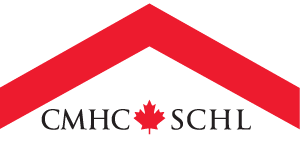This research shows how Canada can achieve its housing and climate goals through innovative development approaches. Using the Future Infrastructure Growth Model, which simulates material and environmental costs, it identifies construction practices to meet housing targets within environmental limits. By prioritizing multi-unit construction, maximizing infill opportunities and adopting circular building practices, this research provides a practical, sustainable framework. This framework supports the construction of 3.5 million new homes by 2030, while reducing emissions and improving affordability.
3 Key Findings
-
✔
Prioritize multi-unit housing: Efficient designs reduce material use, cut waste and lower costs throughout a building's lifecycle.
-
✔
Maximize infill development: Optimize existing land use to minimize environmental impacts, promote walkability and reduce the need for new infrastructure.
-
✔
Adopt circular construction practices: Reuse materials to lower greenhouse gas emissions, conserve resources and build sustainably.
Project scope and expected outcomes
An innovative solution for housing and climate goals
Canada is addressing 2 pressing challenges:
- The need for 3.5 million additional homes by 2030 to restore housing affordability.
- The goal of reducing greenhouse gas emissions to meet sustainability targets.
Current construction practices make it challenging to achieve both goals.
This research, led by Keagan Rankin with research partner, Shoshanna Saxe, from the University of Toronto, explores how Canada can meet its housing needs while staying within environmental limits. It set out to answer this question: How can Canada build the housing it needs while staying within environmental sustainability limits?
Research findings offer practical strategies to align housing development with sustainability goals.
Measuring the environmental impact of housing
The research team developed a data-driven and collaborative approach, working with dozens of Canadian design firms to analyze hundreds of residential building designs.
By quantifying material use through advanced technologies like building information modeling and digital twinning, they created the world’s most detailed database in residential construction. This resource allowed the team to see, for the first time, the full environmental impact of today’s building practices.
Using the database, the team developed the Future Infrastructure Growth Model, a tool that simulates the material and environmental costs of future neighbourhoods. The model tested various scenarios to identify construction practices that meet Canada’s housing goals while staying within environmental limits, providing practical, actionable insights for sustainable development.
The Future Infrastructure Growth Model has the benefit of capturing more uncertainty than previous methods, which is critical for effective decision making. It also makes it a valuable tool for addressing similar challenges in other parts of the world.
Partnerships advance policy change
Collaboration with private sector partners, municipal leaders and other stakeholders has been key to the success and broader application of this research. These partnerships demonstrate the potential for replicable and impactful solutions across Canada.
- City of Toronto: Integrated findings into its revised Multi-plex Housing Bylaw, enabling denser, more sustainable housing development.
- Municipal leaders: Used insights to inform urban planning and housing strategies in cities like Victoria and Burnaby, BC, advancing decarbonization and sustainable development locally.
- Knowledge sharing: The research underwent peer review in 2 leading sustainability journals and was presented at several conferences, reaching hundreds of stakeholders.
These efforts highlight the role of collaboration in shaping policies to promote sustainable, affordable housing nationwide.
Advancing sustainable housing through research and policy collaboration
This research demonstrates that Canada can address housing affordability and climate compatibility together. By rethinking how homes are designed, built and distributed, the findings offer practical, scalable solutions that benefit communities today and into the future.
Program: Housing Research Awards
Activity Stream: Gold Roof Award for Housing Research Excellence
Title of the Research: Providing Affordable Housing Within Climate Limits: A Model of Sustainable Future Growth
Lead Researcher: Keagan Rankin, University of Toronto
Research Committee:
- Shoshanna Saxe, University of Toronto






 Share via Email
Share via Email
